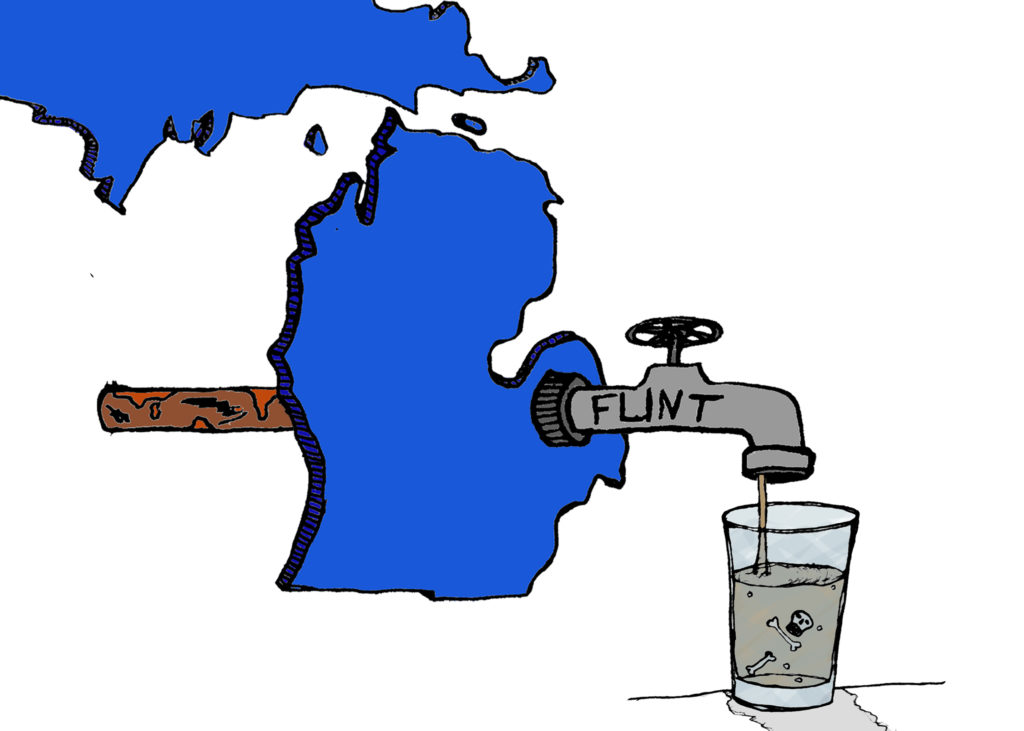Last week, over forty world leaders participated in a climate summit hosted by U.S. President Joe Biden, who was quickly commended for reentering the Paris Climate Agreement since the withdraw in 2017.[1] The convention was full of ambition and promises; the United States and Canada announced cutting their greenhouse gases in half by 2030, while Brazil vowed to reduce deforestation by 40% in exchange for $1 billion USD in subsidies.[2] Unfortunately for Biden, China and India weren’t prone to further policy nudges.
This is not the first time the three largest polluters, who make up half of all current global emissions, came to lackluster collaborations.[3] In 2019, China and India confronted the United Nations for its one-size climate strategy, calling for developed countries with larger “historic” emissions to take initiative instead.[4] It was a clear jab at the U.S., who is arguably responsible for nearly 30% of CO2 emissions since the Industrial Revolution.[5] Not to be outdone, President Donald Trump alluded that climate change was a Chinese-manufactured concept designed “to make U.S. manufacturing non-competitive.”[6]
Placing global warming’s credibility aside, Trump’s opposition was not all that irrational. Climate change abatement in the international arena has boiled down to two schools of thought; that nations should either be given permission to pollute based on their population size or their share of the global market. On one hand, the United States contributes 15% of the world’s pollution and over 24% of the global economy.[7][8] Trump and Biden have a lot to boast about since emissions are relatively petty compared to the commerce it yields.
Yet, the U.S. is comprised of only 4% of the global population. Remove emphasis on America’s capitalistic might and one can see how 15% is a high number. For China and India, both of which have lower GDPs but collectively support one-third of the globe, the distinction makes a big difference whether they can capitalize on dirty resources at our expense.
And with one end focusing on the free market and the other using an “according to his needs” approach, one may be inclined to reference the classical war between capitalism and socialism. You’re not wrong; the debate is one of the same. For Prime Minister Narendra Modi or President Xi Jinping to get their way, the U.S. would have to slow down its $21 trillion economy (2019 USD), spend $2.5 trillion (USD 2020) over ten years achieving net-zero emission standards, or both.[9][10] Unsurprisingly, laissez-faire economists lament this vision.
Even if U.S. manufacturers make significant investments to compete with carbon-guzzling factories in Asia, they are threatened by those willing to evade international agreements to their advantage. After all, fighting climate change is only effective if all polluters faithfully participate. What is to say that Brazil wouldn’t secretly deforest the Amazon even if they were to get their billion-dollar subsidy? This simple game theory, opponents argue, puts American businesses vulnerable for exploitation.
But the decision among climate policymakers remains on which school of thought is more efficient. Is there merit for judging emissions based on markets, or should it be proportional to the people that consume it? On the surface, it seems irrational to permit India quintuple the carbon emissions for 3% of global GDP.[11] If pollution is typically associated with “human progress” and the production of goods and services, India should afford a high quality of life matching Germany or Japan. Since it doesn’t, manufacturers are essentially polluting just for the sake of it.
However, linking emissions with a revenue stream is a loaded and counterproductive proposition. Doing so implies there are social benefits to carbon rather than a few winners over many losers. No one can reasonably suggest that Walmart, which grossed $559 billion last year while being one of America’s largest Medicaid and food stamp beneficiaries, is “resource efficient.”[12][13] According to the Social Progress Index, quality of life in the U.S. has declined within the past decade despite a bullish economy.[14] The market-friendly model does not account whether exploitative wealth is worth the environmental damage. It is also fundamentally regressive, taxing poor nations from growing their economies in favor of those already prosperous. The United States can afford to invest in green technologies, it just chooses not to.
For those laissez-faire economists, the truth may be an uncomfortable – and “anti-capitalist” – one. The alternative model is not fallacy-free. China and India do not need to reinvent the coal-powered steam engine to invest in carbon abatement strategies. U.S. industries do not have to suffer just because millennials are increasingly approaching parenting later in life.[15] But as long as the fossil fuel era is warming the planet and causing economic losses we will all pay a price for, everyone should at least get an opportunity to make the most out of it.
Work Cited
[1][2] Herman, Steve. “Biden Pledges Rapid Decline of Fossil Fuel Use by US.” Voice of America. 22 Apr. 2021. Web. 27 Apr. 2021.
[3] “Each Country’s Share of CO2 Emissions.” Union of Concerned Scientists. 12 Aug. 2020. Web. 27 Apr. 2021.
[4] Darby, Megan. “China and Allies Challenge UN Chief’s Climate Vision.” Climate Home News. Climate Home, 21 Aug. 2019. Web. 27 Apr. 2021.
[5] Clark, Duncan. “Which Nations Are Most Responsible for Climate Change?” The Guardian. Guardian News and Media, 21 Apr. 2011. Web. 27 Apr. 2021.
[6] Jacobson, Louis. “Yes, Donald Trump Did Call Climate Change a Chinese Hoax.” Politifact. The Poytner Institute, 02 June 2016. Web. 27 Apr. 2021.
[7] “Each Country’s Share of CO2 Emissions.” Union of Concerned Scientists. 12 Aug. 2020. Web. 27 Apr. 2021.
[8] “GDP by Country.” Worldometer. 2017. Web. 27 Apr. 2021. <https://www.worldometers.info/gdp/gdp-by-country/>.
[9] “Gross Domestic Product, Fourth Quarter and Year 2019 (Advance Estimate).” BEA. U.S. Bureau of Economic Analysis, 30 Jan. 2020. Web. 27 Apr. 2021.
[10] Wade, Will, and Eric Roston. “Getting U.S to Zero Carbon Will Take a $2.5 Trillion Investment by 2030.” Bloomberg Green. Bloomberg, 15 Dec. 2020. Web. 27 Apr. 2021.
[11] “GDP by Country.” Worldometer. 2017. Web. 27 Apr. 2021. <https://www.worldometers.info/gdp/gdp-by-country/>.
[12] Kohan, Shelley E. “Walmart Revenue Hits $559 Billion For Fiscal Year 2020.” Forbes. Forbes Magazine, 18 Feb. 2021. Web. 27 Apr. 2021.
[13] Miao, Hannah. “Walmart and McDonald’s Are among Top Employers of Medicaid and Food Stamp Beneficiaries, Report Says.” CNBC. CNBC, 19 Nov. 2020. Web. 27 Apr. 2021.
[14] “United States.” Social Progress Imperative. Web. 27 Apr. 2021. <https://www.socialprogress.org/>.
[15] Barroso, Amanda, Kim Parker, and Jesse Bennett. “How Millennials Approach Family Life.” Pew Research Center’s Social & Demographic Trends Project. Pew Research Center, 03 Sept. 2020. Web. 27 Apr. 2021



